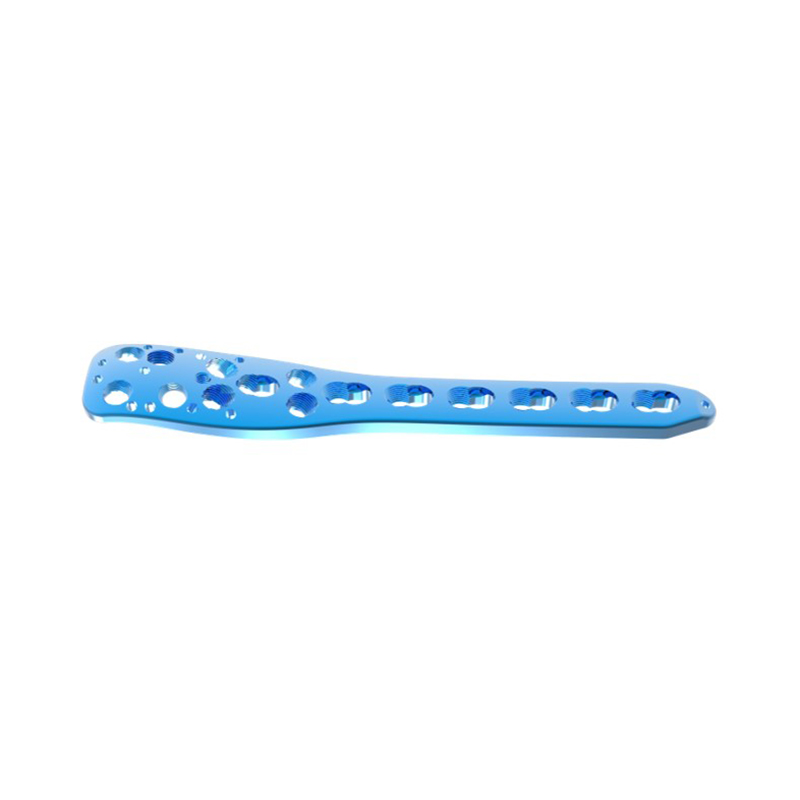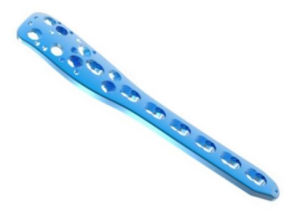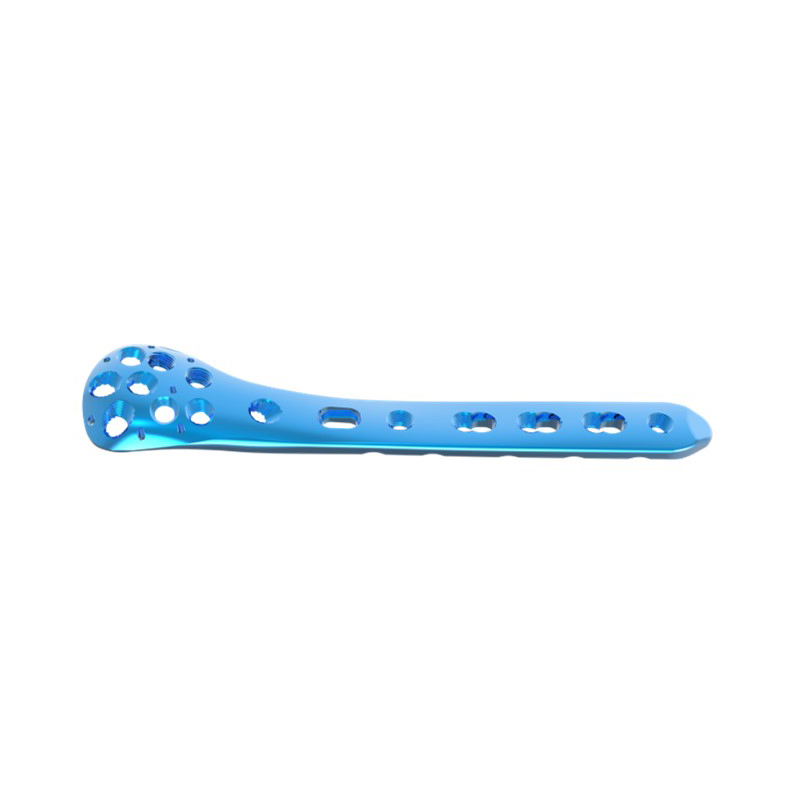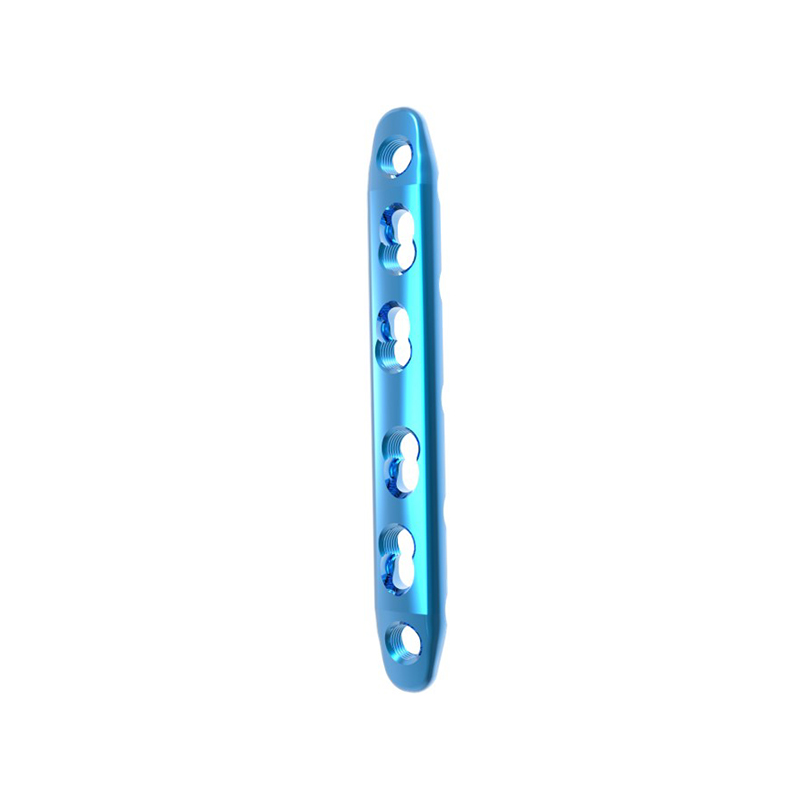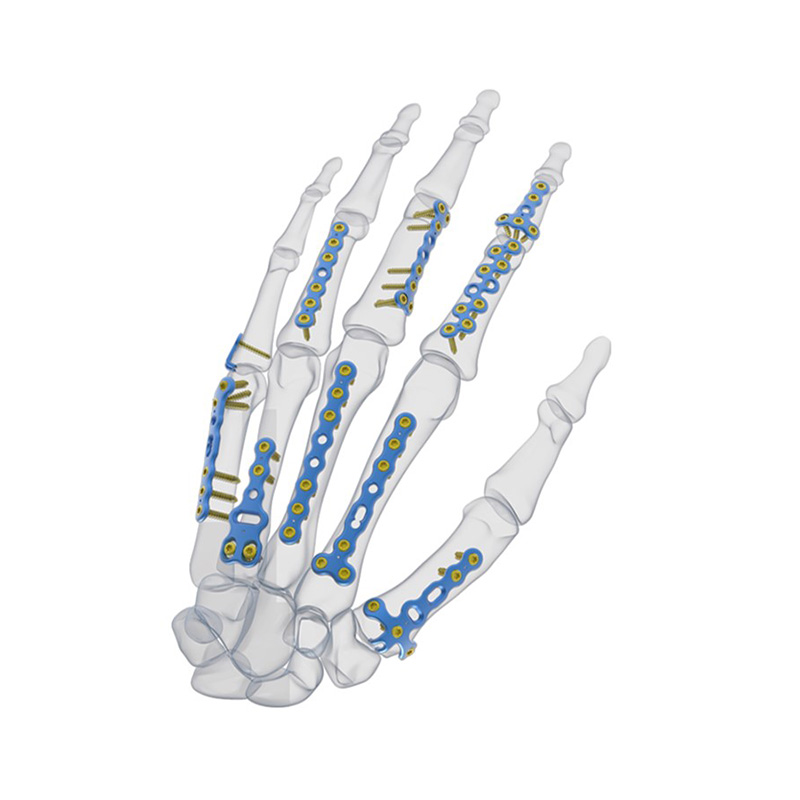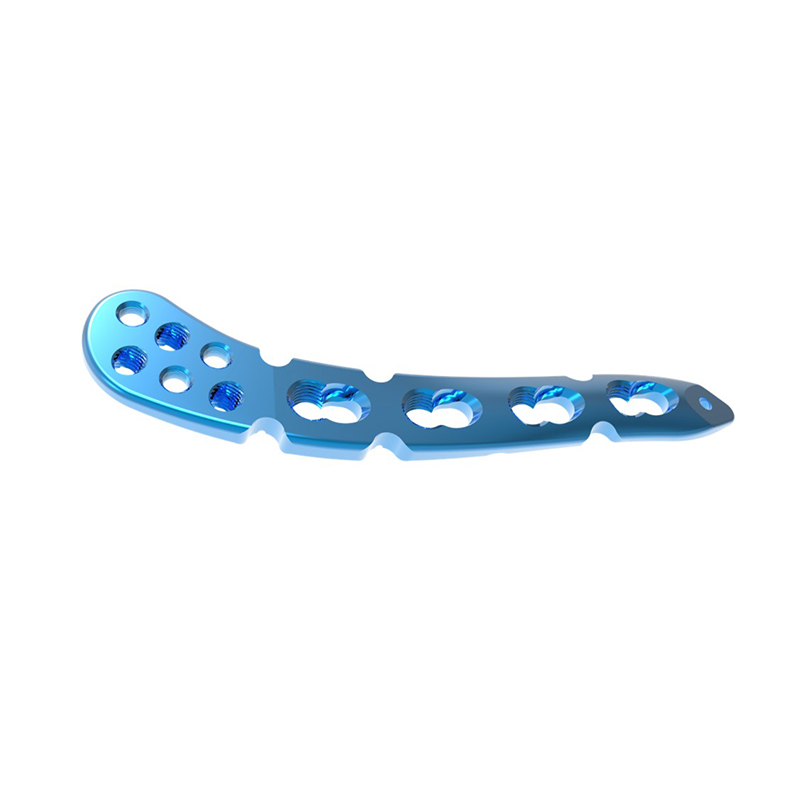Proximal Humerus Locking Compression Plate III
Humerus Locking Plate Features
● Undercuts reduce impairment of blood supply
● Available sterile-packed
Ten suture holes around the perimeter of the proximal part to help maintain fracture reduction

Optimal screw placement enables an angular stable construct to enhance the grip in osteoporotic bone and multi-fragment fractures

Proximal Locking Holes
Provide flexibility in screw placement, allowing different constructs
Permit multiple points of fixation to support the humeral head


Humerus Plate Indications
● Dislocated two-, three-, and four-fragment fractures of the proximal humerus, including fractures involving osteopenic bone
● Pseudarthroses in the proximal humerus
● Osteotomies in the proximal humerus
Orthopedic Plate Clinical Application

Locking Plate Details
| Proximal Humerus Locking Compression Plate III | 3 holes x 88mm |
| 4 holes x 100mm | |
| 5 holes x 112mm | |
| 6 holes x 124mm | |
| 7 holes x 136mm | |
| 8 holes x 148mm | |
| 9 holes x 160mm | |
| Width | 12.0mm |
| Thickness | 4.3mm |
| Matching Screw | 3.5 Locking Screw / 3.5 Cortical Screw / 4.0 Cancellous Screw |
| Material | Titanium |
| Surface Treatment | Micro-arc Oxidation |
| Qualification | CE/ISO13485/NMPA |
| Package | Sterile Packaging 1pcs/package |
| MOQ | 1 Pcs |
| Supply Ability | 1000+Pieces per Month |
The locking compression plate is made of a sturdy titanium alloy, which provides strength and stability to the fractured bone. The plate is anatomically contoured to match the shape of the proximal humerus, ensuring a better fit and reducing the risk of implant failure. It is available in various sizes to accommodate different patient anatomies.
The main advantage of the humerus locking plate is its ability to provide both stability and compression to the fractured bone. The locking screws fixate the plate to the bone, preventing any movement at the fracture site. This promotes proper alignment of the bone fragments, allowing for optimal healing. The compression screws, on the other hand, pull the bone fragments together, ensuring that they remain in close contact and facilitating the formation of new bone tissue.

